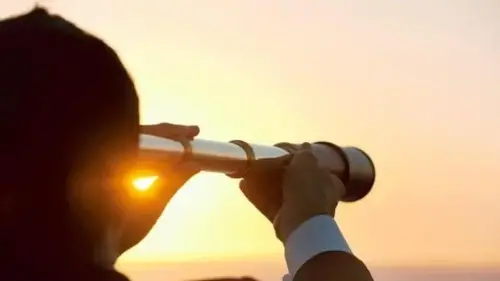
The year 2025 promises to be an exciting one for stargazers, with a variety of celestial events scheduled to occur. Starting from Quadrantid meteor shower to lunar eclipses, supermoons, here are the celestial events to watch out for in 2025.
1. Quadrantid meteor shower
The first celestial event of 2025 is today, January 3. Quadrantid meteor shower peaks on January 3 and 4, it will be the year's first chance to see fireballs in the sky. Reports have indicated that the peak activity will be seen on the night between January 3 and 4 in India. The meteors will possibly peak at around 11:15 pm IST. Some reports claim that the peak timings to catch a view are 5:30 pm on January 3 until 5:24 pm on January 4.
2. Planetary Parade
Planetary parade is a rare celestial event where planets align in a line, resembling a parade. Although it's challenging to see all nine planets together, in 2025, two planetary parades will occur, in January and the other March. From January 21, 2025, six planets—Venus, Mars, Jupiter, Saturn, Neptune, and Uranus while on March 8, Mercury is also set to join in these planets to form a parade. In India, reports have stated that it is likely to viewed at around 8:30 p.m.
Four eclipses in 2025
2025 will offer two solar and two lunar eclipses. Ujjain-based Jiwaji Observatory said that only one of these space phenomena will be visible in India. The eclipses will begin with a total lunar eclipse i.e. on March 14 which will be visible in America, Western Europe, Western Africa and the North and South Atlantic Ocean.
After this, partial solar eclipse will occure on March 29 and will be visible in North America, Greenland, Iceland, over the North Atlantic Ocean, the entire Europe and north-western Russia, Superintendent of the observatory Dr Rajendra Prakash Gupt said as reported by PTI. However, a full lunar eclipse will occur between September 7 and 8, and it will be visible in India, along with several countries in Asia, Europe, Antarctica, the Western Pacific Ocean, Australia, and the Indian Ocean region.
The last eclipse of 2025 will be will be a partial solar eclipse between September 21 and 22 and will be visible in New Zealand, Eastern Melanesia, Southern Polynesia and West Antarctica.
Lyrids meteor shower
NASA describes Lyrids as the oldest known meteor showers which have been observed for 2700 years. Known for their swift and bright meteors, the Lyrids may not be as numerous or fast as the Perseids in August, but they can still surprise viewers with up to 100 meteors per hour, according to NASA. The second meteor shower of the year will be the Lyrid which will be active between April 16 and 25 but will peak on April 23 between 4:30 am and 5:30 am.